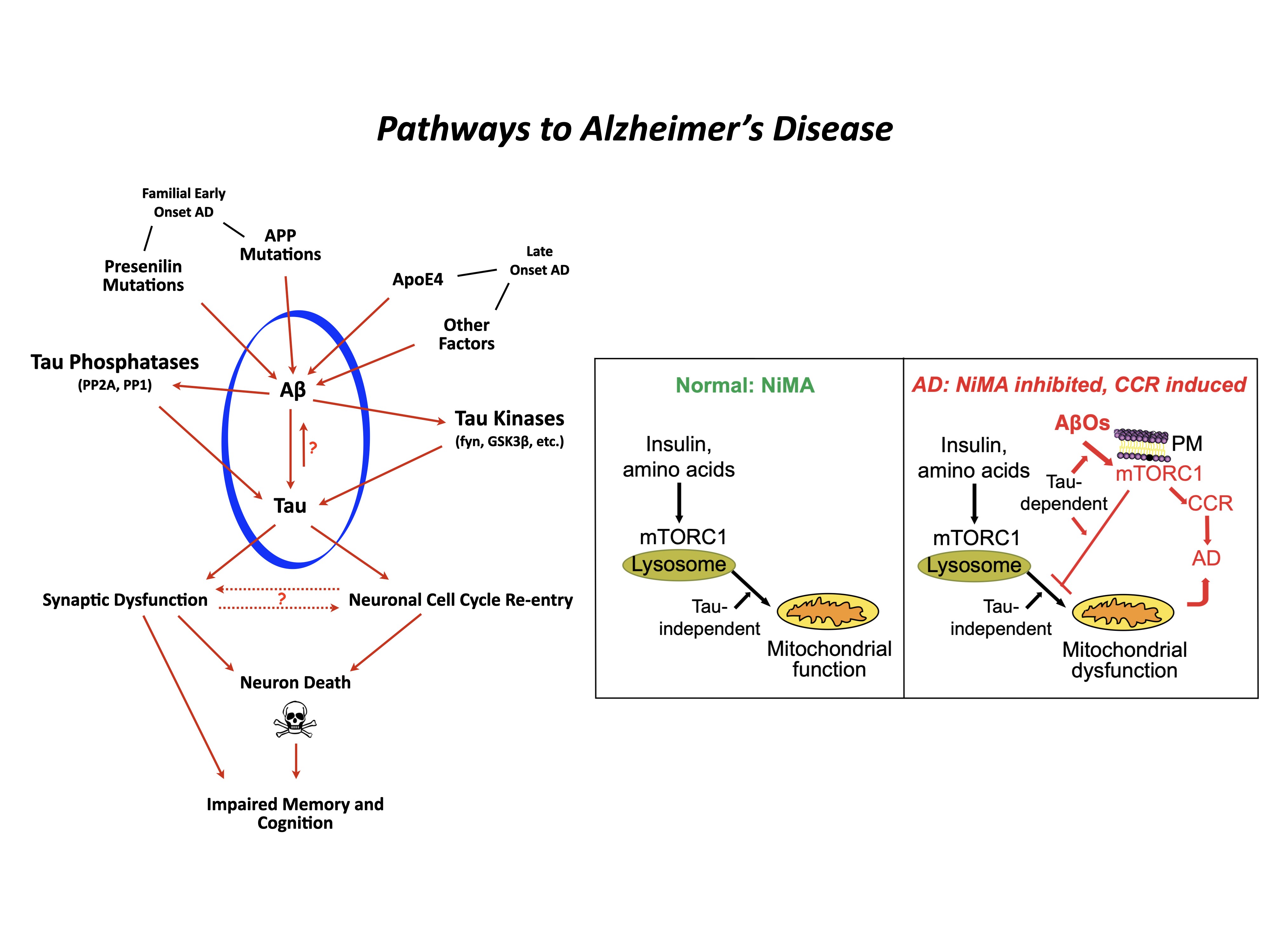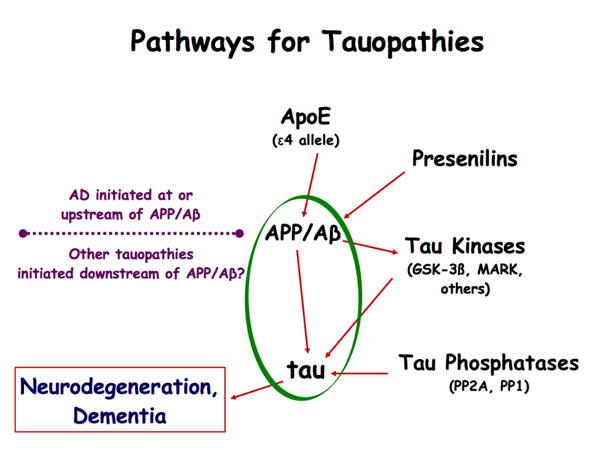Research in our laboratory is focused primarily on Alzheimer’s disease (AD), the most common form of a group of neurodegenerative disorders known collectively as tauopathies.
The histopathological hallmark of AD is the presence in brain of extracellular plaques of amyloid-β (Aβ) peptide fibrils, and intraneuronal neurofibrillary tangles, which are filaments composed of the protein, tau, and are found in all tauopathies.
Despite the conspicuous appearance of plaques and tangles, a growing body of evidence points to their building blocks, Aβ and tau oligomers, as being the toxic molecular species that cause AD.
For example, we have found that tau expression is required for numerous adverse effects of Aβ oligomers on neurons, including microtubules loss, ectopic re-rentry into the cell cycle, cytotoxicity and inhibition of nutrient-induced mitochondrial activity.
The goals of our work are to decipher the metabolic links that connect Aβ and tau to damage neurons during the seminal stage of AD pathogenesis, and to leverage our basic research findings to aid development of effective therapeutic and diagnostic tools for AD.



